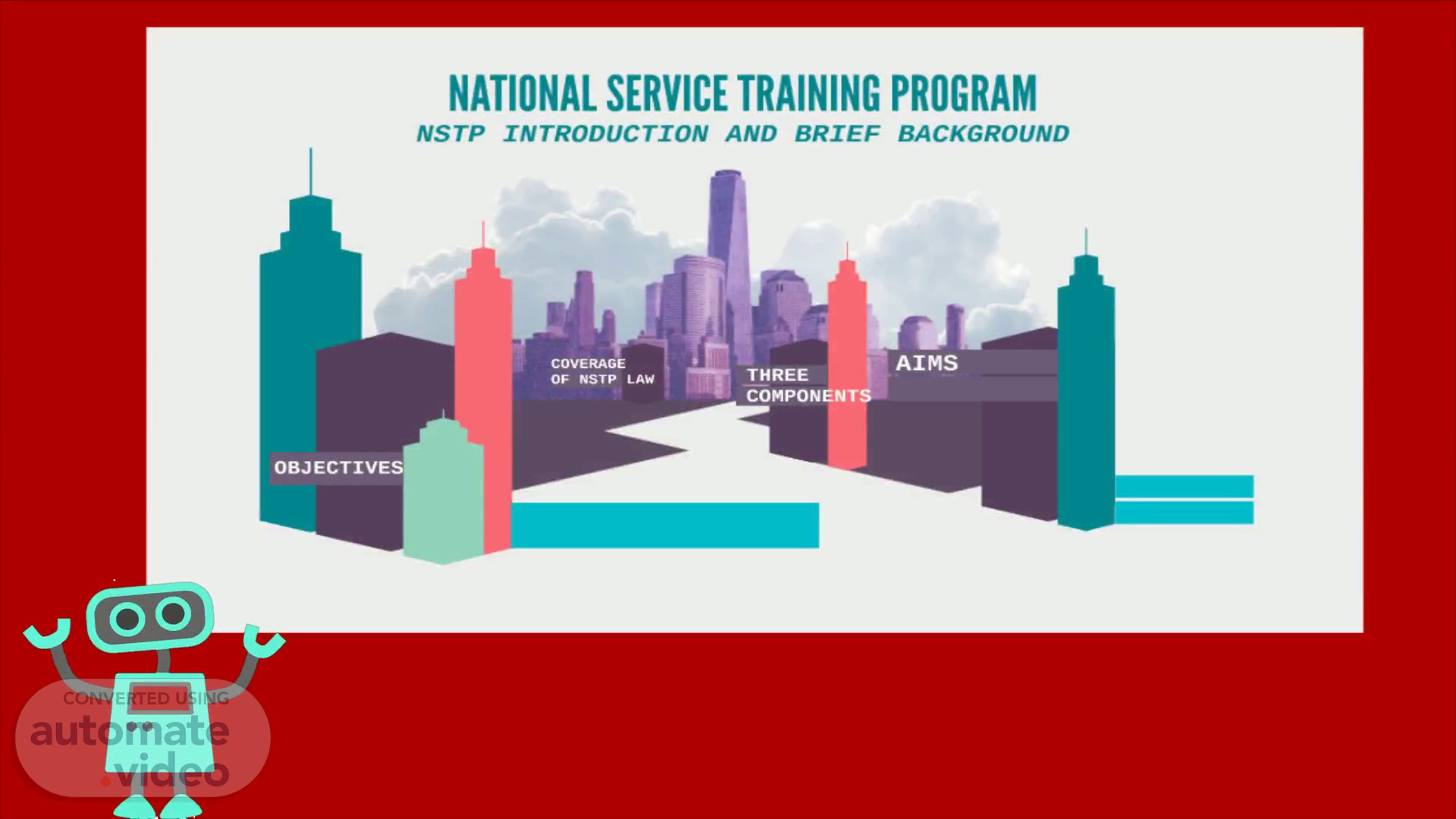
THE FUNDAMENTALS OF SCOUTING
Scene 1 (0s)
[Audio] Good day! especially to my CWTS instructor, Mrs. Anore. I'm Jeff Rio, your AI for today, and I'm going to present the fundamentals of scouting..
Scene 2 (14s)
[Audio] THE FUNDAMENTALS OF SCOUTING THE SCOUT MOVEMENT DEFINED The Scout movement is defined as: "a voluntary, non-political, educational movement for youth that is accessible to everyone regardless of nationality, ethnicity, or religion, in keeping with the goals, guiding principles, and procedures envisioned the Founder". THE PURPOSE OF SCOUTING The purpose of Scouting is: "To support young people in developing to their greatest physical, intellectual, and social potential as people, as law-abiding citizens, and as contributors to their local, national, and the global community..
Scene 3 (55s)
[Audio] PRINCIPLES OF SCOUTING Scouting is based on three broad principles, which represents its fundamental laws and beliefs. They are referred to as: 1," Duty to God and Country" 2. "Duty to Others" 3. " Duty to Self".
Scene 4 (1m 20s)
[Audio] THE SCOUT METHOD The Scout method is defined as: " a system of progressive self-education through: A Promise/Oath and Law; The first element of the Scout method is "A Promise/Oath and Law." The Scout Promise/ Oath and Law are the basic tools for the formulation of the principles of the Scout Movement. Here, however, we are concerned not so much with the ethical principles contained in the Scout Promise/Oath and Law. A young person makes of his own free will a personal commitment to a given code of behavior and he accepts, before a peer group, the responsibility to be faithful to the given word. The permanent identification with these ethical values and the sustained effort to live up to those ideals to the best of their ability ("I will do my best") are therefore the most powerful instruments in the development of young people. 2. Learning by Doing The idea of active education, or simply LEARNING BY DOING, is another fundamental component of the Scout Method. This idea can be found throughout the writings of the Founder, who consistently emphasized that "a boy is always ready to do rather than to digest." Dr. Maria Montessori, one of the greatest minds in education, praised the idea of scouting that learning must be by observation, experimentation, and personal activity..
Scene 5 (2m 45s)
[Audio] 3. Membership of Small Groups Participation in small groups (such as the patrol) with adult supervision, gradual realization and acceptance of responsibility, and instruction in self-government are all geared toward character development and the acquisition of competence, self-reliance, dependability, and the capacities for both leadership and cooperation 4. Progressive and Stimulating Programs Progressive and stimulating programs of varied activities based on the interest of the participants, including games, useful skills, and services to the community, taking place largely in an outdoor setting in contact with nature." The three elements of the Scout Method mentioned above are concretely expressed within a Scout Program, which is the totality of activities practiced by young people in Scouting. This program must be conceived as an integrated whole and not as a collection of miscellaneous and unrelated activities. The Basic characteristic of this program constitutes the fourth element of the Scout Method. 4.1. The Scout program must be conceived in a progressive way in order to satisfy the need for a gradual and harmonious development of young people. One tool to achieve this progression is the test and badge system (or progressive scheme, advancement plan or system, etc.) 4.2 To achieve its objectives, a program must also be stimulating in order to appeal to those to whom it is addressed. In this respect, the program should be a balanced combination of varied activities which are based on the interests of the participants. This, when observed in the design of a program, is one of the best guarantees for its success..
Scene 6 (4m 42s)
[Audio] In the balanced combination in varied activities, games, useful skills and services to the community are three major areas, which should be taken into account by those designing a program. A harmonious combination of activities falling within these three areas constitute the best way to ensure that the program reaches its educational objectives. Thus, from the point of view of intellectual development, the numerous challenges that nature presents stimulate the creative capabilities of young people and enable them to reach solutions based on combinations of elements which the over-organized life in most cities would never have provided. Furthermore, from the point of view of social development, the common sharing of risks and challenges and the collective struggle for the satisfaction of vital needs, creates a powerful link between members of the group. It enables them to understand fully the meaning and importance of life in society. And that's it, thank you for listening..